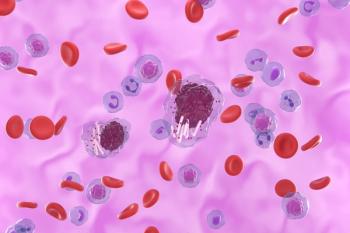
Calorie Consumption Tied to Mortality Risk in Men With MASLD
Key Takeaways
- Low and high energy intake increase all-cause mortality risk in men with MASLD, showing a U-shaped association.
- Women with MASLD did not show significant mortality risk differences based on energy intake.
Findings offer a potential basis for sex-specific dietary guidelines for metabolic dysfunction–associated steatotic liver disease (MASLD), as this relationship was significant for men but not women.
Both low and high daily energy intake were associated with increased all-cause mortality among men with
MASLD affects
To address this gap, researchers analyzed data from nearly 2500 adults with MASLD who participated in the Third National Health and Nutrition Examination Survey, using 24-hour dietary recall to determine total energy intake. Participants were categorized as having low, moderate, or high intake based on sex-specific daily calorie guidelines. Mortality data were obtained via linkage with National Death Index records through the end of 2019, with an average follow-up of over 22 years.
Overall, compared with adults with a moderate daily calorie intake, those with a low intake had a 27% higher risk of all-cause death (95% CI, 1.05-1.53; P = .01), and those with a high daily calorie intake had an even higher risk at 40% (95% CI, 1.03-1.92; P = .03).
Sex-Based Differences in All-Cause Mortality
Results showed a U-shaped association between total energy intake and all-cause mortality in men. Compared with men who consumed a moderate number of calories (2000 to 3000 kcal/day), those with lower (< 2000 kcal/day) intakes faced a 35% higher risk of all-cause death (95% CI, 1.02-1.80; P = .04). This risk was highest for men consuming more than 3000 kcal/day, with a 54% higher risk than men with a moderate calorie count (95% CI, 1.05-2.28; P = .03).
This association was not as strong in women. With a moderate intake defined as 1600 to 2400 kcal/day for women, there was a 14% higher risk of death for both those consuming fewer calories (95% CI, 0.86-1.52; P = .34) and those consuming more (95% CI, 0.81-1.61; P = .46), though neither of these were statistically significant.
There are a number of potential explanations for these observed sex-based differences, according to the researchers, including the different ways men's and women’s bodies distribute energy. “Females rely on lipid oxidation during periods of food scarcity or prolonged exercise, which provides them with a greater capacity to spare protein mass than males and confers a clear survival advantage,” the researchers explained, citing a study showing women who got a high percentage of energy from fat intake had a lower risk of all-cause death.1,3 “Another possible explanation may be the differences in sex hormones between males and females. Studies have shown that estrogen can reduce the risk of insulin resistance and diabetes in females; hence, it has an obvious protective effect on females.”1
High Calorie Intake Nearly Doubles Cancer Mortality Risk
Beyond all-cause mortality, both low and high energy intake were also significantly tied to increased risks of cancer-related mortality in patients with MASLD, 45% and 94%, respectively.
No significant associations were found for
“The potential risk of low total energy intake should be considered for inclusion in guidelines and recommendations for the management of male MASLD patients,” said the researchers.
References
- Wang C, Ma H, Yang H, et al. Sex differences in the association between total energy intake and all-cause mortality among patients with metabolic dysfunction-associated steatotic liver disease. Sci Rep. 2025;15(1):19176. doi:10.1038/s41598-025-04121-1
- Kalligeros M, Vassilopoulos A, Vassilopoulos S, Victor DW, Mylonakis E, Noureddin M. Prevalence of steatotic liver disease (MASLD, MetALD, and ALD) in the United States: NHANES 2017-2020. Clin Gastroenterol Hepatol. 2024;22(6):1330-1332.e4. doi:10.1016/j.cgh.2023.11.003
- Tamura T, Wakai K, Kato Y, et al. Dietary carbohydrate and fat intakes and risk of mortality in the Japanese population: the Japan multi-institutional collaborative cohort study. J Nutr. 2023;153(8):2352-2368. doi:10.1016/j.tjnut.2023.05.027
Newsletter
Stay ahead of policy, cost, and value—subscribe to AJMC for expert insights at the intersection of clinical care and health economics.









































